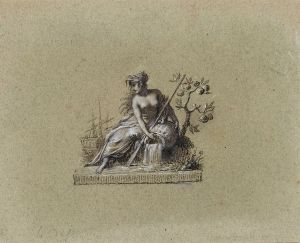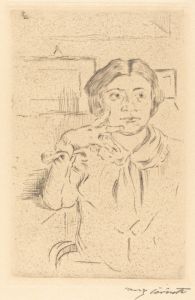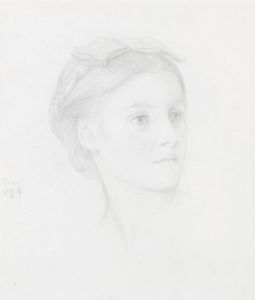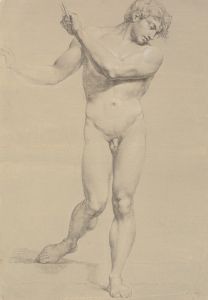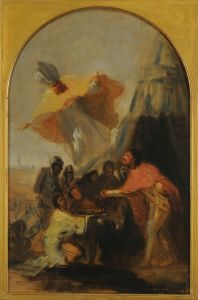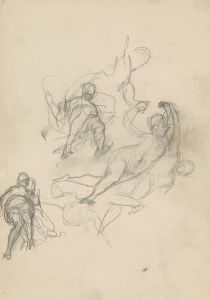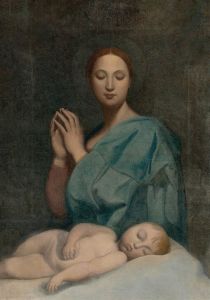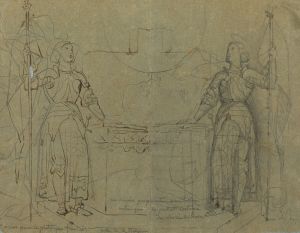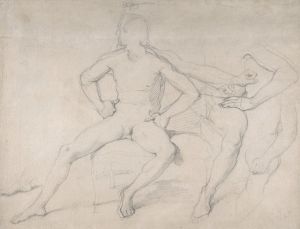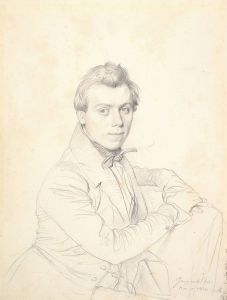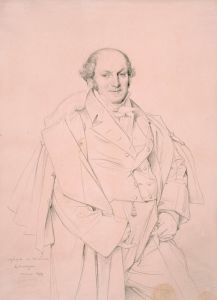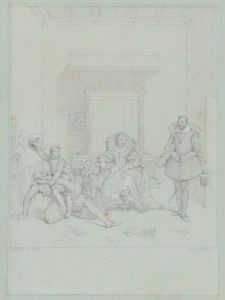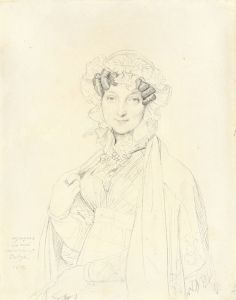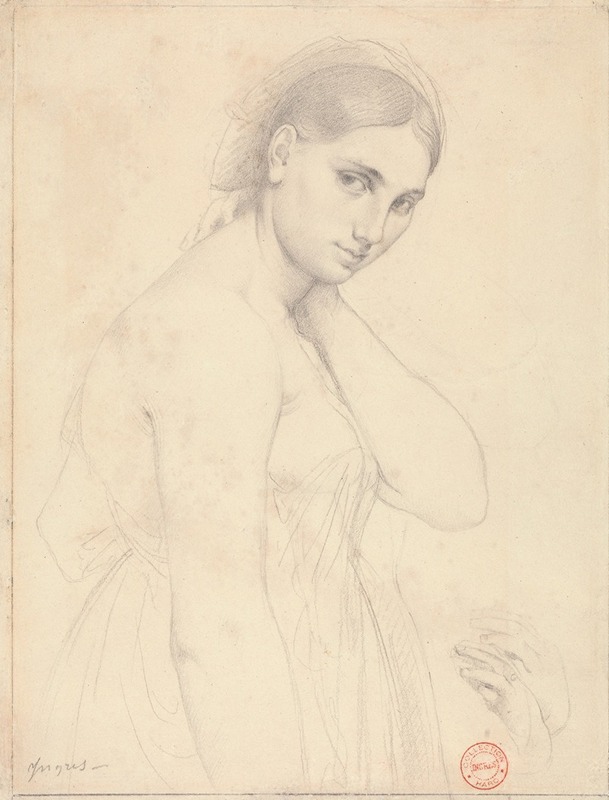
Study for ‘Raphael and the Fornarina’
A hand-painted replica of Jean Auguste Dominique Ingres’s masterpiece Study for ‘Raphael and the Fornarina’, meticulously crafted by professional artists to capture the true essence of the original. Each piece is created with museum-quality canvas and rare mineral pigments, carefully painted by experienced artists with delicate brushstrokes and rich, layered colors to perfectly recreate the texture of the original artwork. Unlike machine-printed reproductions, this hand-painted version brings the painting to life, infused with the artist’s emotions and skill in every stroke. Whether for personal collection or home decoration, it instantly elevates the artistic atmosphere of any space.
"Study for ‘Raphael and the Fornarina’" is a drawing by the French Neoclassical artist Jean Auguste Dominique Ingres. This work is a preparatory study for a larger painting that Ingres intended to create, depicting the renowned Renaissance artist Raphael and his alleged lover, known as La Fornarina.
Jean Auguste Dominique Ingres (1780-1867) was a prominent figure in the Neoclassical movement, known for his precise draftsmanship and his ability to convey the elegance and clarity of classical art. Ingres had a deep admiration for Raphael, considering him one of the greatest artists of all time. This admiration is evident in several of Ingres' works, where he often references or pays homage to Raphael.
The subject of "Raphael and the Fornarina" is rooted in art history and legend. La Fornarina, whose real name is believed to be Margherita Luti, was a baker's daughter from Rome and is traditionally identified as Raphael's muse and lover. Raphael's own painting, "La Fornarina," depicts a young woman with a bare breast, wearing a turban and a bracelet inscribed with Raphael's name. This intimate portrayal has fueled the romantic legend surrounding their relationship.
In Ingres' study, he explores the intimate and personal connection between Raphael and La Fornarina. The drawing captures a moment of tenderness and affection, with Raphael depicted in the act of painting his muse. The composition reflects Ingres' meticulous attention to detail and his skill in rendering human emotion and interaction.
The study showcases Ingres' mastery of line and form. His use of delicate, precise lines creates a sense of depth and texture, bringing the figures to life. The drawing also highlights Ingres' ability to convey the subtleties of human expression, as seen in the gentle gaze and posture of the figures.
While the final painting of "Raphael and the Fornarina" was never completed, the study remains a testament to Ingres' artistic vision and his reverence for Raphael. It provides insight into Ingres' creative process and his approach to capturing historical and legendary subjects with a sense of intimacy and realism.
Ingres' fascination with Raphael extended beyond this single work. Throughout his career, he produced several other pieces that reflect his admiration for the Renaissance master. These works often incorporate elements of Raphael's style and themes, demonstrating Ingres' desire to connect with and continue the classical tradition.
"Study for ‘Raphael and the Fornarina’" is housed in the Musée Ingres in Montauban, France, which holds a significant collection of Ingres' works. The museum provides a comprehensive view of Ingres' artistic development and his contributions to the Neoclassical movement.
In summary, "Study for ‘Raphael and the Fornarina’" by Jean Auguste Dominique Ingres is a preparatory drawing that exemplifies the artist's technical skill and his deep admiration for Raphael. The work captures a moment of intimate connection between Raphael and his muse, reflecting Ingres' ability to convey emotion and human interaction through his precise and delicate draftsmanship.






